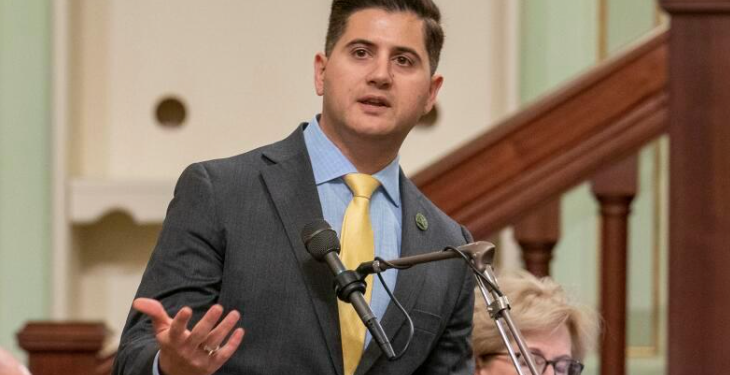The top federal prosecutor in Los Angeles is stepping up immigration enforcement in jails as the Trump administration seeks more ways to remove immigrants from sanctuary cities.
U.S. Attorney Bill Essayli announced a new pilot program this week called Operation Guardian Angel, designed to “neutralize” sanctuary state laws. The office identifies individuals with criminal records who were deported and charges them with illegal reentry, a federal crime.
This approach targets the main place where sanctuary rules have blocked immigration agents — county jails and state prisons.
“Under the Trump Administration we will not allow sanctuary jurisdictions to stand in the way of keeping the American People safe,” Essayli posted on X while announcing the program.
State officials say they already cooperate with federal authorities regarding immigrants who have committed crimes.
“While the Trump Administration may seek to blame California as it grows desperate to deliver on its misguided, inhumane mass deportation agenda, immigration enforcement is and always has been the federal government’s job,” said a spokesperson for California Attorney General Rob Bonta.
Prosecuting illegal entry was common under the Obama and second Bush administrations but declined in recent years. Experts say restarting this practice could increase immigration arrests in the region.
Essayli, a former state assemblyman and son of Lebanese immigrants, was appointed last month. He told Fox News he formed a dedicated team of federal officials to search databases and identify jailed immigrants who had been deported. This effort could lead to dozens of charges each week.
The administration has expressed frustration with California’s policy that prevents local law enforcement from arresting someone solely on a deportation order or holding someone longer in jail to allow immigration agents to detain them.
In the past, immigration officials depended on local police for enforcement. But over the last decade, California and other states strengthened protections for immigrants. The state reduced its involvement in immigration enforcement on the streets and in jails, culminating in a 2018 law ending 287(g) agreements, which let local jailers screen suspects for immigration violations.
Immigration activists argued those agreements damaged trust with the community and unfairly targeted immigrants with minor infractions.
The Trump administration has aggressively pushed to revive such programs nationwide to fulfill its promise of mass deportation.
“The days of giving criminal illegal aliens a free pass are over,” Essayli said in a statement. “While California may be presently disregarding detainers, it cannot ignore federal arrest warrants.”
There remains significant collaboration between state and federal immigration authorities.
Under state law, California prison officials can transfer any inmate to immigration custody, but they must provide written notice. Police can also notify immigration agents when someone is released if the person has certain convictions. These include any felony leading to state prison, most other felonies within the past 15 years, and some serious misdemeanors in the last five years.
President Trump has portrayed sanctuary cities as more dangerous, framing much of his immigration agenda around removing criminals. Experts say this rhetoric doesn’t match reality.
“The foundational assumption is widespread immigrant criminality,” said Charis Kubrin, a criminology professor at UC Irvine. Her research and others show no link between sanctuary status and crime.
“Immigrants do not commit crime at a higher rate than the native born, and immigration to an area does not cause crime rates to rise,” she said.
Essayli’s office said it will file charges and seek arrest warrants so federal agents can “take as many defendants as possible into custody from state jails.”
In 2023 and 2024, federal prosecutors in California’s Central District — covering seven counties including Los Angeles — charged 17 people with illegal reentry following deportation, according to the office.
Between Jan. 20 and May 1, the office charged 347 people with illegal reentry. In the first five days of the program, which began May 10, 13 people were arrested — actually a slower rate than the previous three months.
But even if the numbers increase, the program could face challenges from its own success as prosecutions grow.
“At the end of the day they will, they will run into … issues of capacity,” said Muzaffar Chishti, a senior fellow at the Migration Policy Institute.









